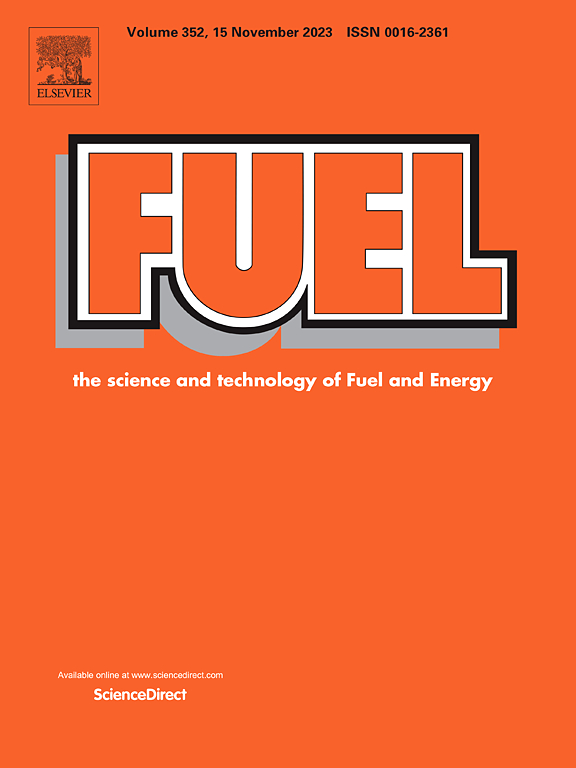Study on in-cylinder soot formation process of F-T diesel/methanol dual-fuel diesel engine
IF 6.7
1区 工程技术
Q2 ENERGY & FUELS
引用次数: 0
Abstract
The coal liquefaction technology can produce F-T diesel and methanol. In this paper, four-cylinder diesel engine bench tests were carried out under the full load condition at 1800 r/min and 2400 r/min. The combustion characteristics of F-T diesel/methanol dual fuel combustion, with the methanol proportion being 0% (F-T Diesel), 10 % (M10), 20 % (M20), and 30 % (M30), as well as the physical and structural characteristics of soot were analyzed. Chemical reaction kinetics and fluid mechanics were used to analyze the precursors and OH radicals of soot in detail, aiming to explore the influence of methanol atmosphere on the formation mechanism of soot precursors. The results show that the addition of methanol delays the maximum heat release point of combustion, prolongs the ignition delay period, and makes the maximum explosion pressure increase with the increase of the methanol blending ratio. The addition of methanol significantly reduces soot emission. With the increase of the methanol combustion ratio, the particle size decreases and the agglomeration degree increases. The addition of methanol inhibits the formation of aromatic hydrocarbons and slows down the formation rate of aromatic hydrocarbons, and the rate gradually increases with the increase of the number of aromatic hydrocarbons, enhancing the oxidation activity and reducing the formation of soot.
求助全文
约1分钟内获得全文
求助全文
来源期刊

Fuel
工程技术-工程:化工
CiteScore
12.80
自引率
20.30%
发文量
3506
审稿时长
64 days
期刊介绍:
The exploration of energy sources remains a critical matter of study. For the past nine decades, fuel has consistently held the forefront in primary research efforts within the field of energy science. This area of investigation encompasses a wide range of subjects, with a particular emphasis on emerging concerns like environmental factors and pollution.
 求助内容:
求助内容: 应助结果提醒方式:
应助结果提醒方式:


